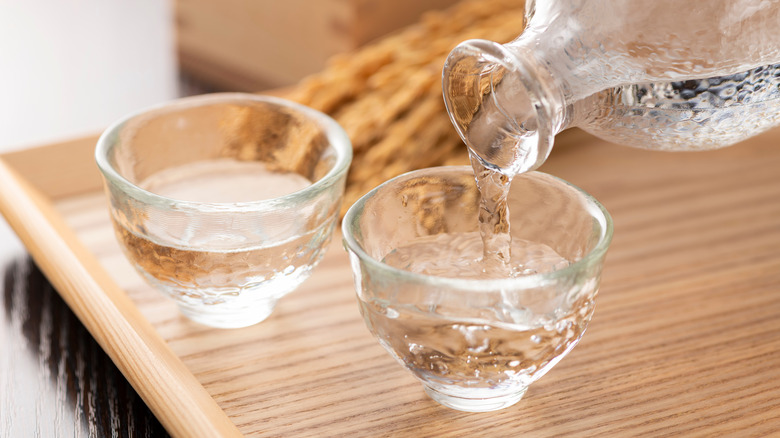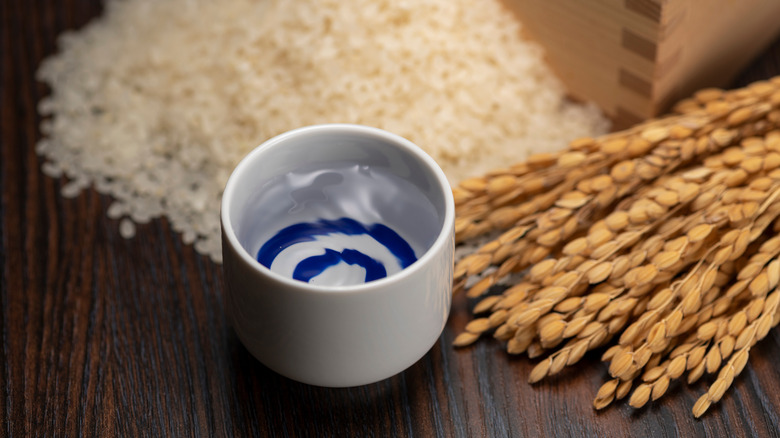How Long Will Sake Stay Good After It's Opened?
If you often find yourself dining at Japanese restaurants, you may have enjoyed a glass of sake along with your meal. The alcohol is made from fermented rice, and can have a spread of different flavor profiles ranging from fruity and floral to nutty and earthy. While it may be slightly similar to mirin, the main difference between sake and mirin is that sake is usually drunk on its own, while mirin is used for cooking.
Different types of sake pair well with different dishes. While lighter sake could taste best with fish-based foods, like certain types of sushi, richer ones may complement red meats and spicy stews instead.
While sake is offered in plenty of restaurants, you can purchase a bottle to sip on at home, too. Prior to opening your bottle of sake, you should always pay attention to the expiration date on the bottle. The alcohol is typically safe for up to a year after bottling if kept at room temperature, or up to two years if it's stored in the fridge. But once your sake has been opened, you'll have a limited window of time to polish off the rest of the bottle for the best quality. Once your sake is open, it will stay good for one to two weeks.
How long sake lasts after opening
While the sake will be good for one to two weeks after opening, you may want to drink the alcohol sooner rather than later for the best-tasting drink. Sake will taste best within a few days of opening: It could still retain its freshly-opened taste for around three days. After that, the flavor of the beverage may begin to change. While the alcohol may still be safe to drink after this timeframe has elapsed, you may taste some noticeable differences in the quality of the alcohol.
The longer your sake is open, the more air it will be exposed to. This will cause oxidation, which is a major threat to alcohol that will alter the taste of the sake. Some varieties will become more mildly flavored, while others could turn harshly acidic. This flavor change may not be noticeable after a few days in the fridge, but any longer could prove detrimental to your drinking experience. If you do plan on keeping your sake around for more than a few days, there are some ways to preserve the quality for a little longer.
How to prolong the life of your sake
First, you'll want to limit the amount of air that the sake comes into contact with to prevent that oxidation and altered taste. Sake stores best in smaller bottles, since there will be less air present inside to affect it. You can also keep a bottle stopper in the bore of the bottle, preventing any new air from circulating in.
You should also keep the sake away from sunlight or any kind of UV light. Exposure to light could affect the amino acids in the bottle, causing it to age prematurely. While some sake bottles may be brown to add some extra protection against this, it may be best to store your bottle in a dark spot anyway for an added layer of security. Temperature changes can also impact the taste of the sake, but cool temperatures can slow this process down. When you're ready to drink it, however, sake can be served hot or cold.
Ultimately, it's a good idea to store your sake in the fridge to keep it cool and away from direct sunlight. While this storage method may help preserve the sake, you'll still want to drink it fairly quickly after opening to ensure that you get the best-tasting sips.


